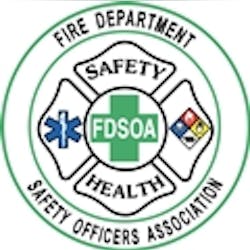ORLANDO – The fire service has enjoyed a stellar reputation for many years, but fire service leaders ought not to rely on that solely to convince decision makers to fund new apparatus.
“Do not fall into the trap that we’re brave, we’re strong and everyone will support us,” said Bruce Moeller, Chief of Staff for Pinellas County, Fla. “It’s not always that way. The fire service has not done well with that model. …We need to look at the way we advocate for ourselves.
Moeller, who in a previous career was a fire chief, presented a lecture on the “Political Side of Apparatus Purchasing,” at the Fire Department Safety Officers Association’s Apparatus Symposium on Monday.
Now, as a proud bureaucrat, Moeller offered tips on how to navigate the treacherous landscape of city managers, budget directors, elected officials and other key participants who are always part of the decision to buy new apparatus.
“Buying a new apparatus is not just a procurement issue, it’s a public policy issue,” Moeller said. “You have got to understand how bureaucrats look at the issues if you want to get more stuff.”
From Moeller’s perspective, politicians have a huge aversion to spending money, especially if it requires them to raise taxes. Most want to keep their jobs and it’s not easy to keep an elected position by raising taxes, especially without good reason.
Municipal managers don’t generally like fire departments either, Moeller said, because fire departments are “needy.” Every time a fire chief walks into one of their offices, it’s generally looking for more money for new stations, new personnel or new fire trucks. Additionally, the fire service in general has taken a hit with pensions and the costs associated with retiring firefighters, Moeller said, noting that leave even less money available for new equipment.
“As much as 20 to 25 percent of the city’s budget can be devoted to fire departments,” Moeller said, noting that police departments can account for 35 percent. Managers have lot of other departments that are equally or more needy, he said. And, with the Great Recession only now beginning to recede, there’s not enough money for everything, especially since most welfare budgets have increased because people are losing their jobs, their homes and their insurance, Moeller said.
“It’s very hard to go out and say ‘let’s spend three quarters of a million dollars for a shiny new, red fire truck when we have people who don’t have adequate dental care,” Moeller said.
At the same time the economy is only slowly rebounding, five activity has dropped at least 50 percent in the last three decades, he said.
“There’s been a lot of economic stress, lots of demand and not enough revenue and you’re not the only department with pent up demands,” Moeller said.
However, there are ways to improve the odds of getting the equipment departments need, he said.
By emphasizing how the purchase of the new apparatus is not simply a replacement, Moeller said, departments will increase the odds of getting approval from the decision makers.
Show the new apparatus will have multiple roles and how it will be used for new missions.
“I am not going to give you money to replace a fire truck,” he said. “But, if you tell me about a new mission, I might listen to you, for a minute anyway.”
Moeller said too often fire departments paint a picture of perfection by making bold claims that they’re the best.
“You can say every response time is two and a half minutes or less and every one of the victims we perform CPR on survives and everything is wonderful,” Moeller said. “If everything is wonderful and everything is perfect, you need nothing. …If you need something, you’ve got to admit there are gaps.”
Additionally, Moeller said it’s a good practice to “plant policy seeds” by taking the elected officials on calls and pointing out deficiencies. Months or even years later, they’ll remember what you said and will likely become an ally when you decide it’s time to replace apparatus.
Identifying all the stakeholders and gaining their trust and respect is important as well, Moeller said, noting it’s usually a group of people, internal to the department, to politicians to the voters and taxpayers who will all weigh in on the decision.
Be ready to back up requirements and specifications with data and standards, he said, and do it with consistency.
Also be ready to take advantage of “windows of opportunity” that are open only for short periods of time. An easy example is the attack of 9/11, Moeller said, but they don’t need to be as dramatic or catastrophic as that to be effective.
“They’re focusing events,” Moeller said, adding that’s usually when action happens. He said inaction is often the product of politics. “There are people out there who say there’s a problem, then there are people who say there are solutions and there are politicians who cause static and nothing happens.”
The objective is to work with the stakeholders to come up with the solution, he said.
Moeller said building relationships always goes a long way in the procurement process.
“Building a consensus is a process of getting both parties to a place where everyone can live,” Moeller said. “Work on the relationship, get the stakeholders to agree with you.”
More from FDSOA:
About the Author

Ed Ballam
Ed Ballam served as associate editor for Firehouse. He is the assistant chief of the Haverhill Corner, N.H. Fire Department, and a National Registered EMT. He is also a Deputy Forest Fire Warden for the New Hampshire Division of Forests and Lands. Professionally, he's been a journalist for over 35 years working for a variety of publications, including employment as managing editor of a national fire service trade journal for more than a decade.
